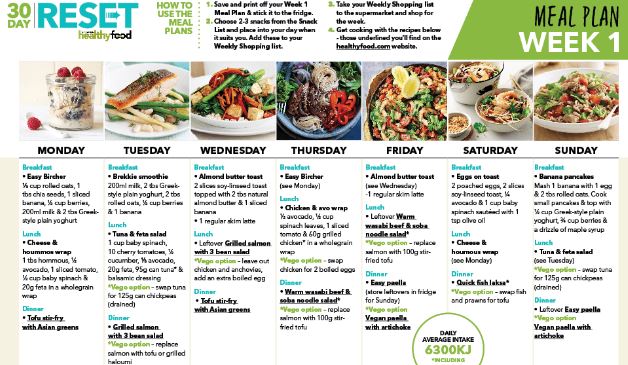Healthy eating meal plan
Outline of the Article
- Introduction to Healthy Eating Meal Plans
- Importance of a Balanced Diet
- Benefits of Following a Healthy Eating Meal Plan
- Understanding Macronutrients
- Carbohydrates
- Proteins
- Fats
- Building Blocks of a Healthy Meal Plan
- Incorporating Whole Foods
- Portion Control
- Meal Timing
- Creating Your Own Meal Plan
- Assessing Dietary Needs
- Planning Balanced Meals
- Meal Prepping Tips
- Sample Healthy Eating Meal Plan
- Breakfast Options
- Lunch Ideas
- Dinner Recipes
- Snack Suggestions
- Tips for Staying Consistent
- Setting Realistic Goals
- Finding Balance
- Dealing with Cravings
- Overcoming Common Challenges
- Eating Out
- Social Gatherings
- Traveling
- Benefits Beyond Nutrition
- Improved Energy Levels
- Better Digestion
- Weight Management
- Conclusion
Article

Healthy Eating Meal Plan: A Guide to Nourishing Your Body
In today’s fast-paced world, maintaining a healthy lifestyle can often feel like an uphill battle. With numerous fad diets and conflicting information bombarding us daily, it’s easy to become overwhelmed and unsure of where to start. However, one simple yet effective approach to achieving optimal health is through a well-rounded and sustainable healthy eating meal plan.
Understanding Macronutrients
Before diving into the specifics of a healthy eating meal plan, it’s essential to understand the role of macronutrients in our diet. Macronutrients, namely carbohydrates, proteins, and fats, are the building blocks of nutrition, providing us with the energy and nutrients our bodies need to function optimally.
- Carbohydrates: Carbs are our body’s primary source of energy, found abundantly in fruits, vegetables, whole grains, and legumes.
- Proteins: Proteins are crucial for muscle repair and growth, as well as supporting immune function. Good sources include lean meats, fish, eggs, dairy, and plant-based options like tofu and lentils.
- Fats: Contrary to popular belief, fats are an essential part of a healthy diet, providing us with sustained energy and aiding in nutrient absorption. Healthy fats can be found in avocados, nuts, seeds, olive oil, and fatty fish.
Building Blocks of a Healthy Meal Plan
Creating a balanced and nutritious meal plan involves incorporating a variety of whole foods while paying attention to portion sizes and meal timing.
- Incorporating Whole Foods: Focus on consuming minimally processed foods that are rich in nutrients and free from added sugars and unhealthy fats.
- Portion Control: Be mindful of portion sizes to prevent overeating and ensure you’re consuming the right amount of calories for your individual needs.
- Meal Timing: Aim for regular meal times throughout the day to keep energy levels stable and promote better digestion.

Creating Your Own Meal Plan
Designing a personalized meal plan involves assessing your dietary needs, planning balanced meals, and implementing effective meal prep strategies.
- Assessing Dietary Needs: Consider factors such as age, gender, activity level, and any specific dietary restrictions or preferences you may have.
- Planning Balanced Meals: Aim to include a variety of foods from all food groups in each meal, focusing on colorful fruits and vegetables, lean proteins, whole grains, and healthy fats.
- Meal Prepping Tips: Spend some time each week meal prepping to save time and ensure healthy options are readily available when hunger strikes.
Sample Healthy Eating Meal Plan
Here’s a sample meal plan to give you an idea of how to structure your meals throughout the day:
- Breakfast: Greek yogurt with berries and granola
- Lunch: Grilled chicken salad with mixed greens, quinoa, and avocado
- Dinner: Baked salmon with roasted sweet potatoes and steamed broccoli
- Snacks: Apple slices with almond butter, carrot sticks with hummus
Tips for Staying Consistent
Sticking to a healthy eating meal plan long-term requires commitment and consistency. Here are some tips to help you stay on track:
- Setting Realistic Goals: Start with small, achievable goals and celebrate your progress along the way.
- Finding Balance: Allow yourself to enjoy your favorite treats in moderation, rather than depriving yourself completely.
- Dealing with Cravings: Find healthier alternatives to satisfy cravings, such as swapping sugary snacks for fresh fruit or dark chocolate.
Overcoming Common Challenges
Eating healthily doesn’t have to mean sacrificing social outings or travel experiences. Here’s how to navigate common challenges:
- Eating Out: Look for restaurants that offer healthier options or make substitutions to suit your dietary preferences.
- Social Gatherings: Bring a healthy dish to share or eat a small, nutritious meal beforehand to avoid overindulging.
- Traveling: Pack snacks and portable meal options to stay fueled while on the go, and research healthy eating options at your destination.
Benefits Beyond Nutrition
Beyond the physical benefits of a healthy eating meal plan, such as improved energy levels and weight management, nourishing your body with wholesome foods can have far-reaching effects on your overall well-being.
Conclusion
Incorporating a healthy eating meal plan into your lifestyle is a simple yet powerful way to support your health and vitality. By focusing on whole, nutrient-dense foods and adopting sustainable eating habits, you can enjoy the numerous benefits that come with nourishing your body from the inside out.
FAQs
- Can I still lose weight on a healthy eating meal plan?
- Yes, by focusing on portion control and choosing nutrient-dense foods, you can achieve and maintain a healthy weight.
- Are cheat days allowed on a healthy eating meal plan?
- While occasional indulgences are okay, it’s essential to practice moderation and balance.
- How can I make meal prepping easier?
- Try batch cooking and preparing meals in advance to save time during the week.
- Is it okay to customize my meal plan based on my dietary preferences?
- Absolutely! Tailoring your meal plan to suit your tastes and preferences can increase your chances of sticking with it long-term.
- Will I feel deprived on a healthy eating meal plan?
- Not at all! With a wide variety of nutritious and delicious foods to choose from, you can enjoy satisfying meals while still prioritizing your health.